无人机超级大集锦-----2
来源:百度文库 编辑:超级军网 时间:2024/04/28 20:08:15

This undated handout photo provided by the U.S. Air Force shows a MQ-9 Reaper, armed with GBU-12 Paveway II laser guided munitions and AGM-114 Hellfire missiles, piloted by Col. Lex Turner during a combat mission over southern Afghanistan. (Lt. Col.. Leslie Pratt, US Air Force)
美国空军的MQ-9收割者(MQ-9 Reaper), 装备有GBU-12 铺路二型激光制导炸弹(GBU-12 Paveway II laser guided munitions) 和 AGM-114 地狱火导弹( AGM-114 Hellfire missiles)

This undated photo provided by U.S. Customs and Border Protection shows an unmanned drone used to patrol the U.S.-Canadian border. The planes, which are based out of North Dakota, are now venturing as far as Eastern Washington on their patrols. (U.S. Customs and Border Protection)
美国海关和边境保护的无人机
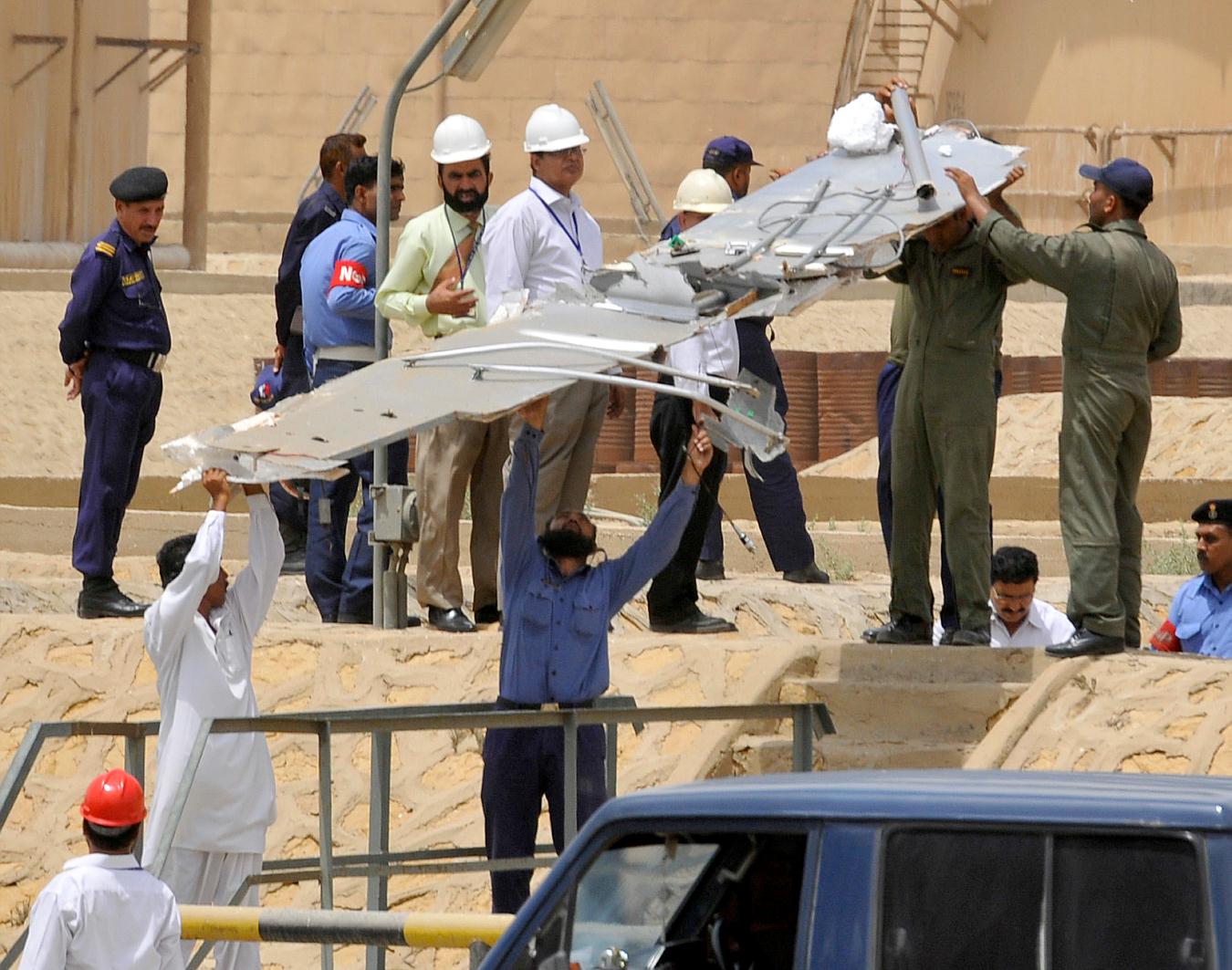
Pakistani officials collect remains of a Pakistan Navy unmanned aerial vehicle (UAV) which crashed outside an oil refinery in Karachi, Pakistan on Tuesday, July 19, 2011. According to a Pakistan Navy official, the accident was caused by a bird hit. No casualties were reported. (Shakil Adil)
巴基斯坦的海军无人机残骸
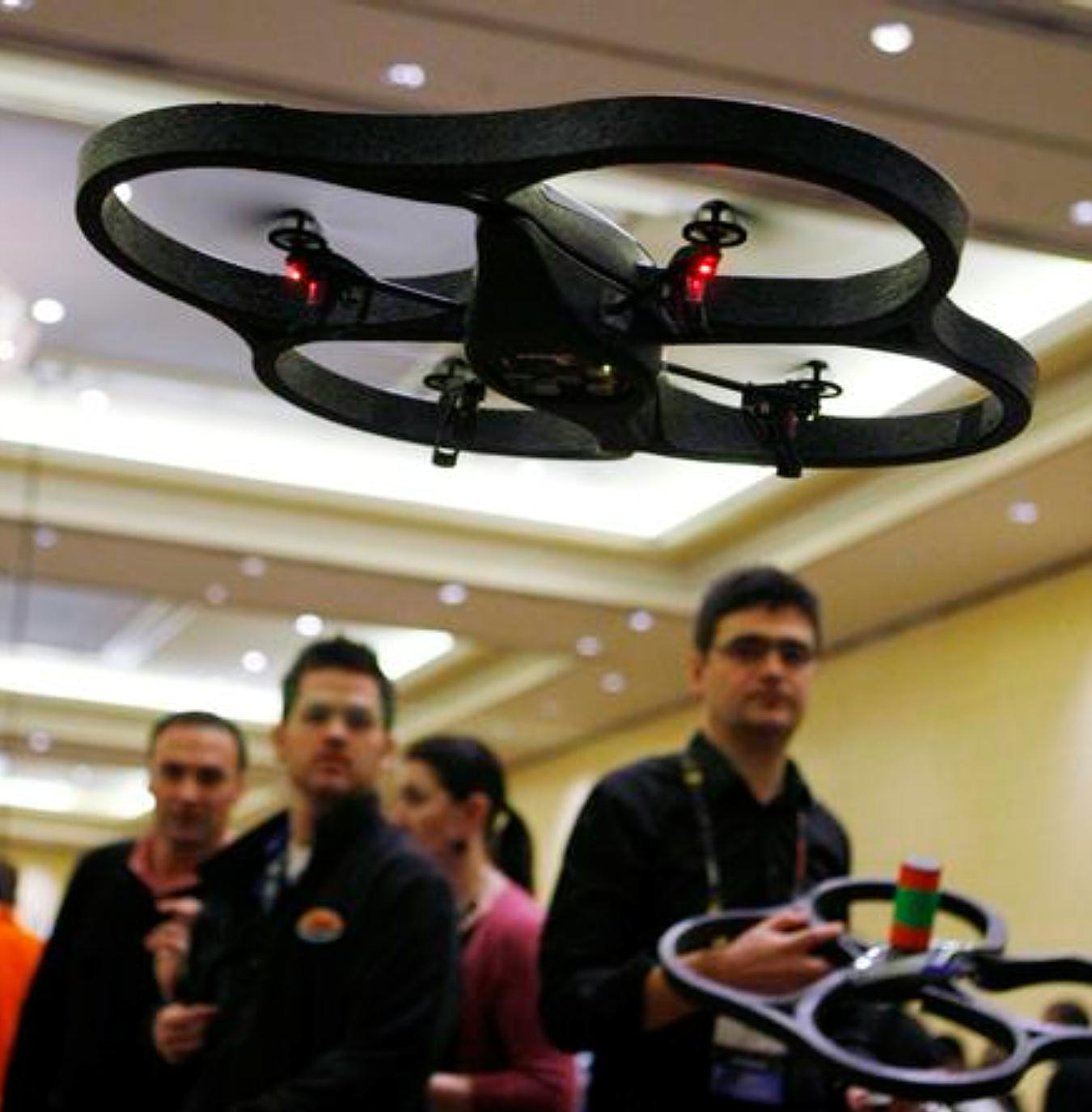
This product image provided by Parrot, shows the AR.Drone. Parrot, a company known more for its Bluetooth hands-free car speakerphones, has launched a small, unmanned aircraft that can be controlled using an iPhone or another of Apple Inc.'s Wi-Fi-enabled gadgets, including the iPod Touch and the iPad.(Parrot)
Parrot的AR.无人机

U.S. Navy Boatswain's Mate 3rd Class Christian Riddle, left, and Boatswain's Mate 2nd Class Dante Galati secure a recovered Air Force BQM-74C Chukar III aerial target drone to a crane aboard USS Tortuga (LSD 46) after an at-sea exercise for Cooperation Afloat Readiness and Training (CARAT) 2011 in the South China Sea June 11, 2011. CARAT is a series of bilateral exercises held annually in Southeast Asia to strengthen relationships and enhance force readiness. (U.S. Navy photo by Mass Communication Specialist 2nd Class Katerine Noll/Released)
坠毁的美国空军的BQM-74C 石鸡III 空中靶机(BQM-74C Chukar III aerial target drone)

U.S. Army Sgt. Brian Curd, and Spc. Nicholas Boxley, both combat engineers, from Echo Company, 1st Battalion, 68th Armor Regiment, 3rd Advise and Assist Brigade, 4th Infantry Division, prepare the RQ-16A Tarantula Hawk unmanned aerial vehicle, for operation, at Basra province, Iraq, Dec. 1, 2010. Although, T-Hawk requires a great deal of maintenance, the capabilities it provides are well worth the time spent. (U.S. Army photo by 2nd Lt. Matthew Fumagalli/Released). Date Shot: 12/1/2010
the RQ-16A 狼蛛鹰无人机the RQ-16A Tarantula Hawk unmanned aerial vehicle
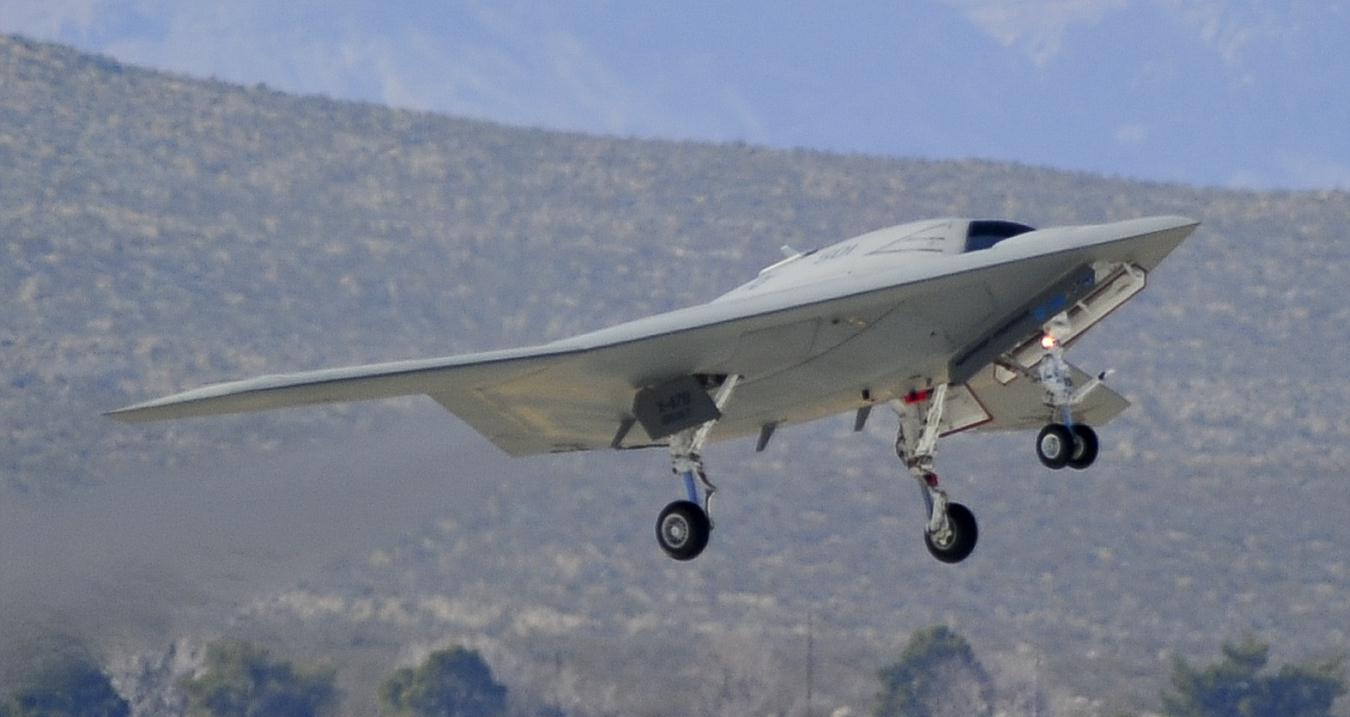
An X-47B Unmanned Combat Air System Demonstrator (UCAS-D) completes its first flight at Edwards Air Force Base, Calif., Feb. 4, 2011. The UCAS-D program will demonstrate the capability of an autonomous, low-observable unmanned aircraft to perform carrier launches and recoveries. (DoD photo courtesy of Northrop Grumman/Released). Date Shot: 2/4/2011
X-47B 无人作战飞机系统-表威者 X-47B Unmanned Combat Air System Demonstrator (UCAS-D)
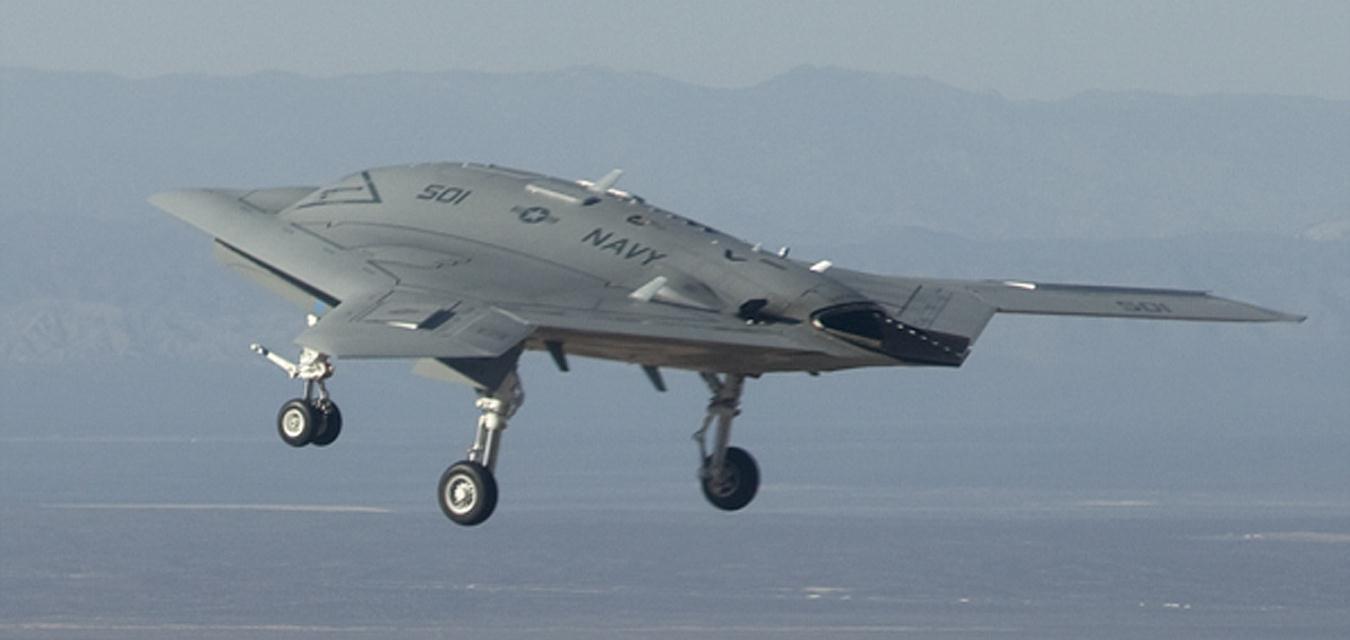
X-47B 无人作战飞机系统-表威者

Dr. Gregory Parker, Micro Air Vehicle team leader, holds a small winged drone that resembles an insect, in the U.S. Air Force Micro Air Vehicles lab at Wright Patterson Air Force Base in Dayton, Ohio, July 11, 2011. The Micro Air Vehicles unit of the Air Force Research Laboratory at Wright Patterson AFB is developing small military drones, with the goal of making them so small that they resemble small birds and insects, including some that will have moving wings. The mission is to develop MAVs that can find, track and target adversaries while operating in complex urban environments. The engineers are using a variety of small helicopters and drones in the lab to develop the programs and software. Testing takes place in a controlled indoor lab where the team flies the MAVs and then gathers data to analyze for further development. Reuters
美国空军微型空气车辆MAV实验室展示一个仿昆虫的小型有翼无人机
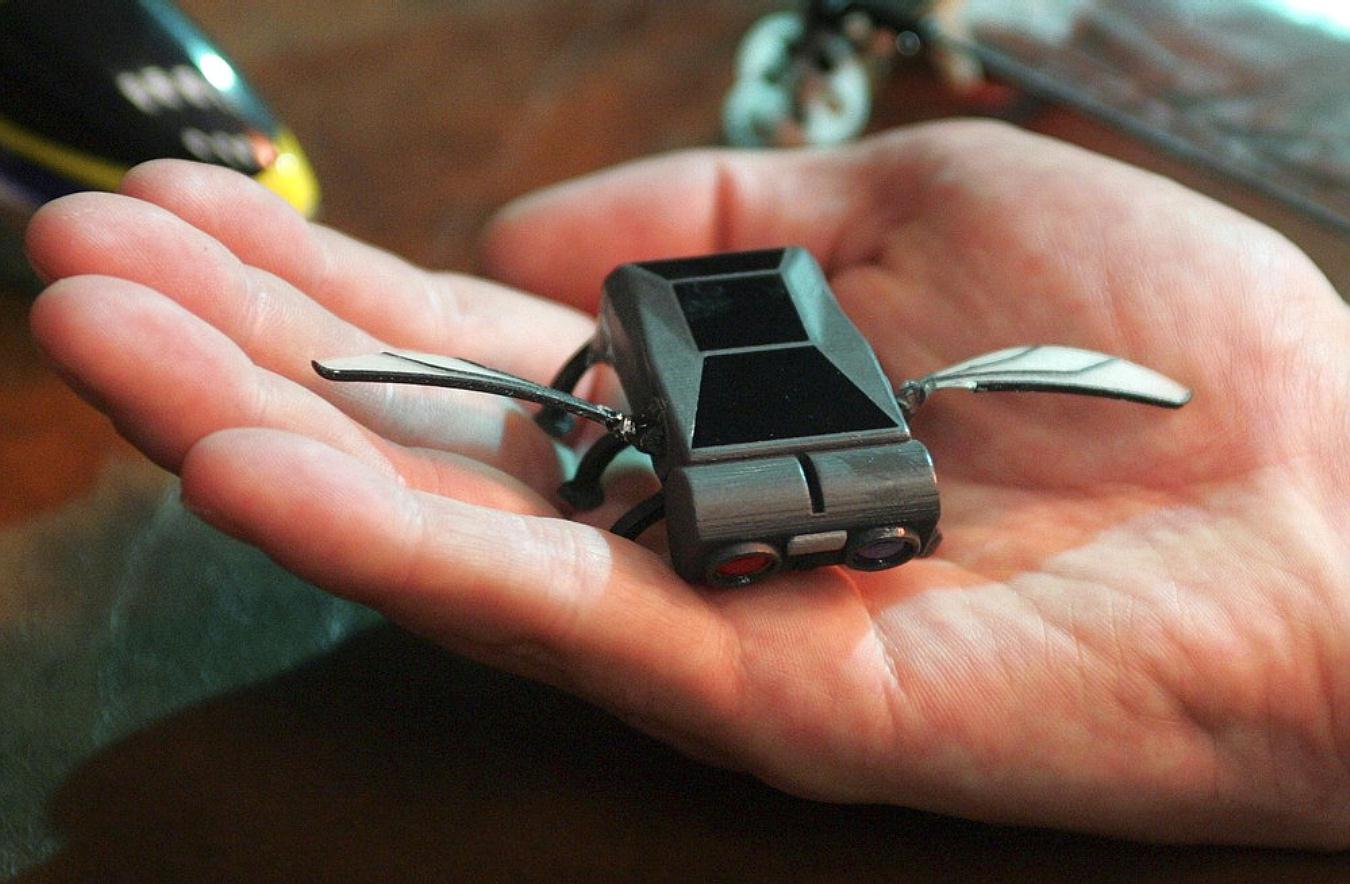
A model of an insect size U.S. Air Force drone is held by a member of the Micro Air Vehicles team of the Air Force Research Laboratory, which is developing small drones at Wright Patterson Air Force Base in Dayton, Ohio, July 11, 2011. Reuters
美国空军微型空气车辆MAV实验室展示的又一个仿昆虫的小型无人机

A computer controlled U.S. Air Force drone prepares to lift off for a test flight of in the Micro Air Vehicles lab at Wright Patterson Air Force Base in Dayton, Ohio, July 11, 2011. Reuters
美国空军微型空气车辆MAV实验室的小型无人机准备起飞

Air Photo Service Co. Inc, Japan, January 2011
日本提供的...

This undated handout photo provided by the U.S. Air Force shows a MQ-9 Reaper, armed with GBU-12 Paveway II laser guided munitions and AGM-114 Hellfire missiles, piloted by Col. Lex Turner during a combat mission over southern Afghanistan. (Lt. Col.. Leslie Pratt, US Air Force)
美国空军的MQ-9收割者(MQ-9 Reaper), 装备有GBU-12 铺路二型激光制导炸弹(GBU-12 Paveway II laser guided munitions) 和 AGM-114 地狱火导弹( AGM-114 Hellfire missiles)

This undated photo provided by U.S. Customs and Border Protection shows an unmanned drone used to patrol the U.S.-Canadian border. The planes, which are based out of North Dakota, are now venturing as far as Eastern Washington on their patrols. (U.S. Customs and Border Protection)
美国海关和边境保护的无人机

Pakistani officials collect remains of a Pakistan Navy unmanned aerial vehicle (UAV) which crashed outside an oil refinery in Karachi, Pakistan on Tuesday, July 19, 2011. According to a Pakistan Navy official, the accident was caused by a bird hit. No casualties were reported. (Shakil Adil)
巴基斯坦的海军无人机残骸

This product image provided by Parrot, shows the AR.Drone. Parrot, a company known more for its Bluetooth hands-free car speakerphones, has launched a small, unmanned aircraft that can be controlled using an iPhone or another of Apple Inc.'s Wi-Fi-enabled gadgets, including the iPod Touch and the iPad.(Parrot)
Parrot的AR.无人机

U.S. Navy Boatswain's Mate 3rd Class Christian Riddle, left, and Boatswain's Mate 2nd Class Dante Galati secure a recovered Air Force BQM-74C Chukar III aerial target drone to a crane aboard USS Tortuga (LSD 46) after an at-sea exercise for Cooperation Afloat Readiness and Training (CARAT) 2011 in the South China Sea June 11, 2011. CARAT is a series of bilateral exercises held annually in Southeast Asia to strengthen relationships and enhance force readiness. (U.S. Navy photo by Mass Communication Specialist 2nd Class Katerine Noll/Released)
坠毁的美国空军的BQM-74C 石鸡III 空中靶机(BQM-74C Chukar III aerial target drone)

U.S. Army Sgt. Brian Curd, and Spc. Nicholas Boxley, both combat engineers, from Echo Company, 1st Battalion, 68th Armor Regiment, 3rd Advise and Assist Brigade, 4th Infantry Division, prepare the RQ-16A Tarantula Hawk unmanned aerial vehicle, for operation, at Basra province, Iraq, Dec. 1, 2010. Although, T-Hawk requires a great deal of maintenance, the capabilities it provides are well worth the time spent. (U.S. Army photo by 2nd Lt. Matthew Fumagalli/Released). Date Shot: 12/1/2010
the RQ-16A 狼蛛鹰无人机the RQ-16A Tarantula Hawk unmanned aerial vehicle

An X-47B Unmanned Combat Air System Demonstrator (UCAS-D) completes its first flight at Edwards Air Force Base, Calif., Feb. 4, 2011. The UCAS-D program will demonstrate the capability of an autonomous, low-observable unmanned aircraft to perform carrier launches and recoveries. (DoD photo courtesy of Northrop Grumman/Released). Date Shot: 2/4/2011
X-47B 无人作战飞机系统-表威者 X-47B Unmanned Combat Air System Demonstrator (UCAS-D)

X-47B 无人作战飞机系统-表威者

Dr. Gregory Parker, Micro Air Vehicle team leader, holds a small winged drone that resembles an insect, in the U.S. Air Force Micro Air Vehicles lab at Wright Patterson Air Force Base in Dayton, Ohio, July 11, 2011. The Micro Air Vehicles unit of the Air Force Research Laboratory at Wright Patterson AFB is developing small military drones, with the goal of making them so small that they resemble small birds and insects, including some that will have moving wings. The mission is to develop MAVs that can find, track and target adversaries while operating in complex urban environments. The engineers are using a variety of small helicopters and drones in the lab to develop the programs and software. Testing takes place in a controlled indoor lab where the team flies the MAVs and then gathers data to analyze for further development. Reuters
美国空军微型空气车辆MAV实验室展示一个仿昆虫的小型有翼无人机

A model of an insect size U.S. Air Force drone is held by a member of the Micro Air Vehicles team of the Air Force Research Laboratory, which is developing small drones at Wright Patterson Air Force Base in Dayton, Ohio, July 11, 2011. Reuters
美国空军微型空气车辆MAV实验室展示的又一个仿昆虫的小型无人机

A computer controlled U.S. Air Force drone prepares to lift off for a test flight of in the Micro Air Vehicles lab at Wright Patterson Air Force Base in Dayton, Ohio, July 11, 2011. Reuters
美国空军微型空气车辆MAV实验室的小型无人机准备起飞

Air Photo Service Co. Inc, Japan, January 2011
日本提供的...
A computer controlled U.S. Air Force drone prepares to lift off for a test flight of in the Micro Air Vehicles lab at Wright Patterson Air Force Base in Dayton, Ohio, July 11, 2011. Reuters
美国空军微型空气车辆MAV实验室的小型无人机准备起飞
这个和我花一百块给儿子买的遥控玩具差不多,为毛俺飞的时候总是坠毁呢?
有更详细数据就好了
楼主辛苦了
中国什么时候能有无人机呢?
流放摆时 发表于 2012-5-22 16:13 
中国什么时候能有无人机呢?
中国满天飞的无人机就被你选择性无视了

中国什么时候能有无人机呢?
中国满天飞的无人机就被你选择性无视了
无人机,相对于其它领域来说,还能HKC一点

飞翔之光 发表于 2012-5-22 16:26 
无人机,相对于其它领域来说,还能HKC一点
无人机是新方向啊,说不定就是下次战争的主角

无人机,相对于其它领域来说,还能HKC一点
无人机是新方向啊,说不定就是下次战争的主角
无人有两种 有人操控 和 自主飞行
给无人机的电脑里装个人脸识别软件。。。输入目标照片。。。自主攻击
但如果飞到宇宙大棒子国。。。无人机的程序会发生混乱。。。
但如果飞到宇宙大棒子国。。。无人机的程序会发生混乱。。。

那个无人迹好小啊!迷你型的!
中国什么时候能有无人机呢?
越南战争我兔就在用无人机了
越南战争我兔就在用无人机了
林林总总的无人机
